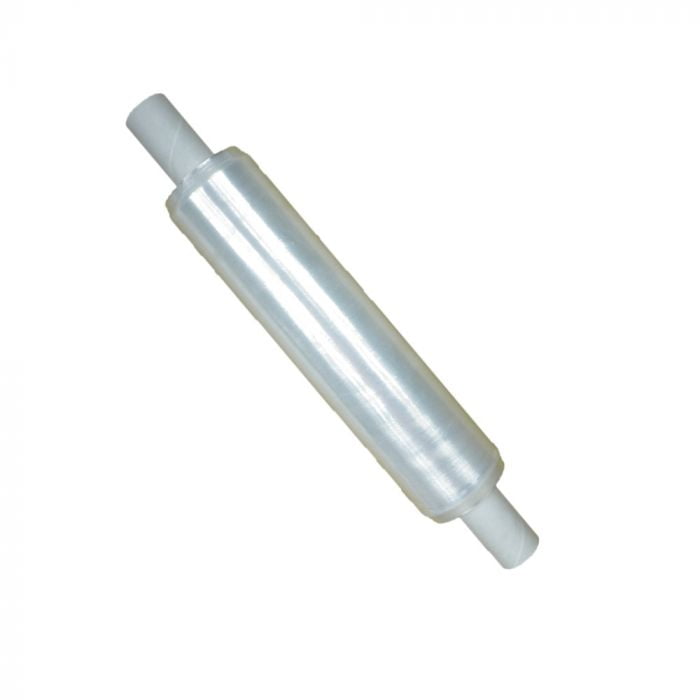
Stretch wrap is a plastic film commonly manufactured from linear low-density polyethylene (LLDPE) used in pallet wrapping – wrapping pallets helps to secure products in place to reduce the risk of damage, unwanted tampering, and worker injury. When it comes to stretch wrap, there are two main types used – ‘blown stretch film’ and ‘cast stretch film’. The primary difference between these two types of stretch wrap film is the process in which each is created and manufactured. These differences also affect the usability and price of the film, but how do you know which option is right for your company? Below are some key facts relating to each type.
How Is Stretch Wrap Made?
All stretch wrap begins initially with polymeric feed stock (often referred to as resin) and the extrusion process. This resin is in the form of small pellets of plastic material that look very similar to BB’s. The manufacturing of stretch wrap includes several layers – each of which may include different resins and additives. Some of the additives used in stretch wrap include the following:
- Tackifier: supplies ‘cling’ so that the film can stick to itself
- Pigment: tinted or opaque films used for security purposes
- UV resistance: prevents deterioration of film when products such as fertiliser or mulch are stored outside.
The extrusion process involves pushing molten polymer through a circular or slot die. This continuous process enables the production of a consistent high-quality product to an extremely accurate gauge. There are two main extrusion processes – ‘blown’ and ‘cast’:
Blown Stretch Wrap – ‘Blown’ Extrusion
[Explanation from British Plastics Federation]
Plastic melt is extruded through an annular slit die, usually vertically, to form a thin-walled tube. Air is introduced via a hole in the centre of the die to blow up the tube like a balloon. Mounted on top of the die, a high-speed air ring blows onto the hot film to cool it. The tube of film then continues upwards, continually cooling, until it passes through nip rolls where the tube is flattened to create what is known as a ‘ lay-flat’ tube of film. This slow cooling process is one of the reasons why the wrap looks hazy and dull.
The lay-flat film is then either kept as such or the edges of the lay-flat are slit off to produce two flat film sheets and wound up onto reels. If kept as lay-flat, the tube of film is made into bags by sealing across the width of film and cutting or perforating to make each bag. This is done either in line with the blown film process or at a later stage.
Cast Stretch Wrap – ‘Cast’ Extrusion
Cast extrusion involves a different process – the resin is extruded through a linear slit die and oozes out on to large diameter rollers for cooling. After cooling is complete, the film is then wound up to the final roll product. Depending on the original thickness of extrusion, sometimes film is thinned to the target gauge by winding the resulting film faster than it is extruded.
Blown vs Cast – The Differences
Blown Stretch Wrap:
Hazy, Dull, Tough, Noisy, Impact Resistant
- Superior puncture resistance
- Produces less manufacturing scrap
- Has a high level of cling
- Durable and provides maximum toughness.
Cast Stretch Wrap
Clear, Glossy, Better Gauge, Quiet, ‘Natural’ Cling
- High transparency
- Excellent barrier for moisture, gases, and aromas
- Uniform thickness throughout
- No limits on the thickness of the film
- Has a very quiet unwind.
Commonly Asked Questions
1. Which stretch wrap has greater memory?
Blown stretch wrap has a much higher degree of memory.
2. Which stretch wrap can stretch the furthest?
Generally speaking, blown stretch wrap. However, blown stretch wrap requires more force.
3. Which stretch wrap has the best clarity?
Cast stretch wrap is extremely clear and produces the highest levels of clarity.
4. Which stretch wrap has the least amount of gloss?
Blown stretch wrap has a less glossy appearance.
Conclusion
For more information and expert advice on blown stretch wrap and cast stretch wrap, please call us on (01691) 691496 or email us at info@agritel.co.uk

